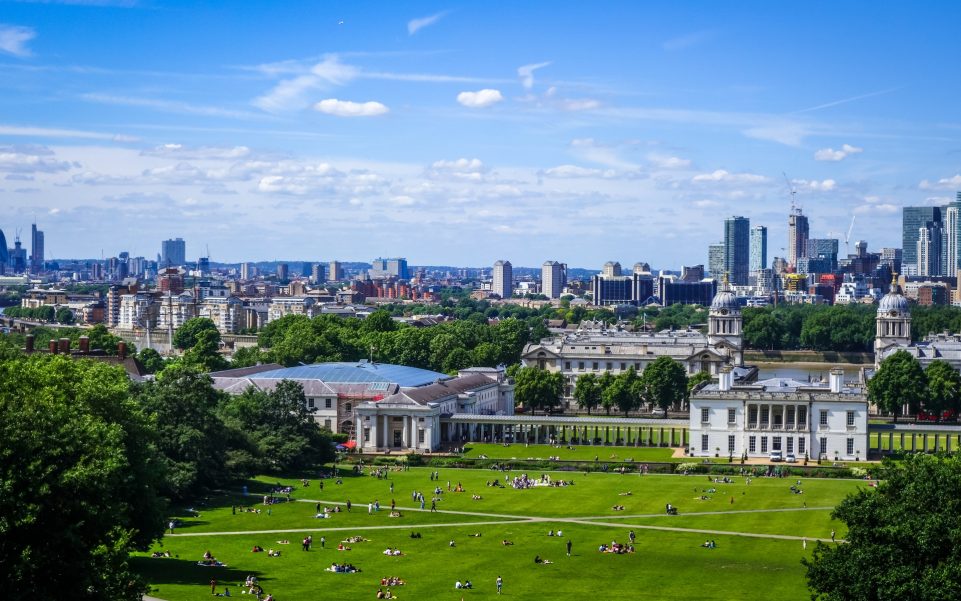UK National Parks: a variety of landscapes and attractions

Red double-decker buses, the fog-shrouded Big Ben and the majestic Tower – these are the things that come to mind when it comes to the UK. However, being captive to stereotypes, many people overlook the diversity of the natural landscape of this amazing country. Centuries-old dense forests, picturesque lakes, emerald meadows and, of course, old majestic castles – all these are priceless treasures of Great Britain, which you can get in touch with in the country’s national parks.
The Lake District, Snowdonia, Peak District and Dartmoor are vast expanses of nature that have retained their original beauty. They are protected by the state, which controls the observance of a number of rules on their territory. In this article we will get acquainted with the most interesting sights of the most popular British national parks, learn their history and secrets.
1. Lake District
Five hours’ drive from the capital, in the Cumberland Mountains, on the shores of the Irish Sea, lies England’s largest national park, the Lake District. This unique natural site, recognised as a UNESCO heritage site, comprises four majestic lakes – Windermere, Derwent Water, Ullswater and Coniston Water. These are supplemented by several smaller water bodies and thus create a truly vast expanse of water.
Lake Windermere is the largest natural body of water in the whole of England. It attracts millions of travellers from all over the world. The charm of its scenery, its dense forests and wide fields where sheep graze, inspires artists, musicians and poets. No wonder it was here that a special ‘Lake District School’ of Romantic poets was born during the Age of Enlightenment. William Wordsworth, the founder of this movement, described the Lake District as “a national treasure to which every man is entitled, if he has eyes to see and a heart to love and enjoy”.
Once on the sandy shores of Lake Windermere, you can swim, steam or enjoy activities on the water. Sailing and windsurfing, sap surfing and kayaking are available. All necessary equipment is available for hire right on the coast.
The lake abounds with a variety of fish species, from pike to salmon and trout. Fishing enthusiasts can try their luck on the lake shore or fish from a boat. Only teenagers under 16 years of age may fish without special permission from the park administration.
Walking and cycling tours are also hugely popular here. Dozens of trails connect Lake Windermere to local attractions. There is the historic Wray Castle, which is open to visitors, the Stott Park Bobbin Mill, a distillery offering tours, and an aquarium with lake fauna and exotic species of aquatic animals from around the world.
Those who want to immerse themselves in history and feel in harmony with nature should be patient and take the longer routes that lead from Lake Windermere straight to the mountains. There are over 150 peaks to climb and England’s highest point is Scafell Pike. The mountain is 978 metres high, making it a true jewel of this scenic area. Along the way there is plenty of evidence of Stone Age people as well as Romans and Vikings. The wide meadows are home to stone circles – the local ‘Stonehenge’, over 5,000 years old – and the ruins of ancient temples.
Even if travellers lose their way, they can always turn to the friendly locals. The Lake District is a mosaic of mostly small rural houses and hotels. Their inhabitants are used to the abundance of tourists and are always happy to help.
2. Snowdonia
Once you have seen the endless expanses of nature, mighty mountains and wide green meadows in the films The Sword of King Arthur, Clash of the Titans and Lara Croft: Cradle of Life, it is impossible to forget them. These mesmerising vistas remain in your heart and memory forever. These films were shot in Snowdonia, Britain’s largest national park.
About 4 million people visit Snowdonia every year. From April to September, at the height of the tourist season, huge streams of people travel to this marvellous place to conquer the summits of nine mountain ranges. The town of Beddgelert is the starting point for climbing the highest mountain in the region, Snowdon, after which the park is named. It rises 1085 metres above sea level. It is not difficult to climb: tourists can take a cable car up the mountain if they wish. Apart from Snowdon, other peaks, such as Tryfan, are also very popular with visitors to the park. Its slope is steeper and harder to climb, so tourists need special equipment and climbing skills. All the effort spent on the ascent will be justified, because it is on the mountain peaks that you can enjoy stunning panoramic views of the Welsh National Park, which take your breath away and give you a feeling of unity with nature and the centuries-old history of this place.
Due to the large number of tourists, travellers are better off planning their trips in advance to book good places in local hotels or get a camping permit. The latter is one of the best ways to experience the nature of Snowdonia. Travellers can stay in designated camping areas by booking on the park’s website, or they can get a ‘wild camping’ permit. As in other UK national parks, much of Snowdonia is privately owned and it is illegal to camp or camp overnight without prior permission from the landowner or farmer.
Travelling through the nature park, each tourist can choose a hiking, cycling or horse-riding route of varying degrees of difficulty. Many trails on the territory of Snowdonia are quite difficult due to the peculiarities of the natural landscape. They lead to the tops of mountains, and on this way travellers can test themselves overcoming obstacles in the form of mountain rivers and waterfalls, one of which is the largest in Wales – 80-metre waterfall Pistyll Rhaeadr. However, Snowdonia National Park offers more than just challenging trails. You’ll also find easier trails that wind through ancient woodlands or lead to medieval castles. For example, Harlech Castle and Castell y Bere, two magnificent examples of 13th-century architecture built on Snowdonia’s rocky soil, are a testament to Welsh talent and craftsmanship. Their construction is simple and elegant because of the defence provided by the surrounding mountains. Moreover, not far from Castel y Bere are the ancient medieval towns of Llanberis and Conwy, both of which offer an insight into Celtic culture.
3. Peak District
Located near Snowdonia and spread across six counties, the Peak District is the first national park in the British Isles. It is distinguished from other parks by its unique landscape dominated by gentle hills and valleys. The Peak District is divided into the northern Dark Peak and the southern White Peak. The former is characterised by wetlands, while the latter is characterised by large limestone deposits, valleys and gorges. White Peak is where most of the area’s population is concentrated.
Thanks to the protection of the territory, the Peak District has preserved a lot of evidence that people have lived in these places since ancient times. The first settlers appeared here as early as 6,000 – 7,000 years ago, as evidenced by ancient stone circles. In Peak District the threads of history of different epochs are closely intertwined: here you can see fortresses and roads preserved from the times of the Roman Empire, medieval churches, palaces of XVII-XVIII centuries and modern houses. The Peak District National Park is a mirror of English history.
The palaces of the Peak District are a particular centre of attraction for visitors. Just outside the village of Bakewell is Chatsworth House Castle, owned by the Dukes of Devonshire. The exterior of the estate survives from the 18th and 19th centuries, but it’s not so much the interior as the unique landscaping that attracts attention. It is believed that Jane Austen’s novel Pride and Prejudice was based on Chatsworth House. For this reason, a film adaptation of the novel was shot here in 2005.
One of the most romantic castles in the Peak District is Haddon Hall, mesmerised by the scent of climbing roses and the majestic appearance of its crenelated towers with stone gargoyles. There’s also the ancient North Lees Hall tower at Stanage Cliff, which was built in the 16th century and is a striking example of Elizabethan architecture. “Three storeys high; a lord’s house; the battlements round the top gave it a picturesque appearance,” was how Charlotte Bronte, who visited the Hall in 1845, described it. It became one of the main sources of inspiration for the novel Jane Eyre.
At Stanage Cliff, visitors can also enjoy heathland and outdoor activities. From rock climbing and horse riding to hang gliding and paragliding, there’s something for everyone. Cycling enthusiasts will appreciate the four main cycling routes laid out on the site of former railway tracks. Carefully designed routes offer the most beautiful views of the Peak District’s scenery, allowing tourists to enjoy the journey without the slightest discomfort.
It is important to emphasise that many of the national park’s trails are suitable for people with disabilities and families with pushchairs. There are “Miles without Stiles” in the Peak District, which are comfortable, well-surfaced trails with no steps or steep gradients.
4. Dartmoor
In the south-west of England lies the wonderful Dartmoor National Park. Here, amidst endless heather meadows, herds of cattle graze and cosy thatched cottages create the atmosphere of an old English village. Rare moss-covered trees, huge granite boulders and thickets of ferns add to the charm of the area. Dartmoor is similar in landscape to the Peak District Nature Park, but the harsher climate makes it truly unique. The changeable weather with frequent rain and fog makes exploring the park difficult, but not a barrier to the millions of tourists who come here each year. The variety of attractions and the opportunity to experience a close connection with nature is what draws travellers from all over the world. Armed with warm, waterproof clothing, sturdy footwear and a map of the park, you can embark on an unforgettable journey across Dartmoor.
The rocky granite tors that dominate the Dartmoor landscape were formed over 280 million years ago. The Haytor Rocks are an excellent example. Their unusual, rounded shape, which strikes the imagination of travellers, is due to the constant exposure to strong cold winds. From the top of the cliffs there is a breath-taking view of Dartmoor that leaves no tourist indifferent. Not far from the granite torus is the quarry of the same name – the place where granite has been mined for centuries. Here inquisitive visitors can also see the granite tramway, formerly used to transport stone from Dartmoor to the harbour towns. The rocks quarried in this area have been the basis for iconic historical sites such as London’s National Gallery and London Bridge.
The Hound Tor rocks, a few kilometres from Hightor, are also remarkable. These granite formations are also an example of extreme weathering. Legend has it that once upon a time these rocks were a pack of dogs that were turned to stone by an evil witch. The imposing appearance of the cliffs was the inspiration for Sir Arthur Conan Doyle’s “The Hound of the Baskervilles”. The writer, a great lover of Dartmoor, dedicated many of his creations to it, for example, the action of such stories as “The Fatal Shot” and “Silver” takes place in this area. In her novel Harry Potter and the Goblet of Fire, Dartmoor is the setting for the Quidditch World Cup.
Dartmoor is a marvellous place, a veritable treasure trove of 2,750 architectural monuments and 1,082 ancient monuments. The park is home to the medieval farmhouse of Higher Uppacott, a characteristic period farmhouse that housed both people and livestock under one roof. Other local attractions include the sash bridge near the village of Postbridge, the 15th-century medieval Plymouth Castle, and boulders with Latin inscriptions and Christian symbols. It can be difficult to explore the vast territory of the park on your own, so visitors can use a guide, download a free audio guide on the Dartmoor website or take part in the ‘Become a History Hunter’ historical quest. Balloon rides are also available, a great way to see as much of Dartmoor as possible.
Dartmoor ponies, Britain’s oldest breed of pony, are a particular pride of the national park. They are renowned for their calm disposition, incredible strength and stamina. Domesticated ponies have been found in Dartmoor since the Bronze Age, as evidenced by hoof prints found during excavations. For this reason, they are even depicted on the national park’s coat of arms. Dartmoor ponies roam freely throughout the reserve and, like all livestock, belong to local farmers. So please note that it is forbidden to feed or touch them without their owner’s consent.
The UK has an incredible variety of national parks, from the Lake District with its spectacular mountains and dense forests to Dartmoor with its stone monuments and heather meadows. Travelling to these places allows you to forget the hustle and bustle of the city and enjoy the beauty, majesty and peace of nature. Whether it’s active entertainment, learning about history or simply contemplating the scenery, the UK’s national parks offer an unforgettable experience.
FAQ about the UK’s national parks
What are the basic rules for visiting UK national parks?
Entry to British national parks is free. However, it is worth bearing in mind that many of the services and activities within them are chargeable.
Barbecues and open fires are prohibited in the Lake District, Snowdonia, Peak District and Dartmoor. Hunting is prohibited in the nature parks, and tourists must obtain a special paid permit from the park authorities to fish.
Can I farm in a national park?
Much of the Lake District, Snowdonia, Peak District and Dartmoor is privately owned. Anyone can purchase land in a national park and farm it. It is important to point out that in some national parks (e.g. the Lake District) farmers can take advantage of the special programme “Farming in Protected Landscapes” and receive additional funding for farm development.
Can drones be flown over national parks?
To launch drones, tourists need to obtain permission from the owners of the land over which the devices will be launched, flown and landed. Park authorities warn of the possible risks: animals living in nature reserves (e.g. sheep) may be stressed by drone noise. Drone owners should remember that the Wildlife and Countryside Act 1981, guarantees legal protection for birds and wildlife from disturbance, especially during the breeding season. Also, if the use of a drone causes harm to park visitors, the owner of the device must have adequate insurance to compensate those affected.




